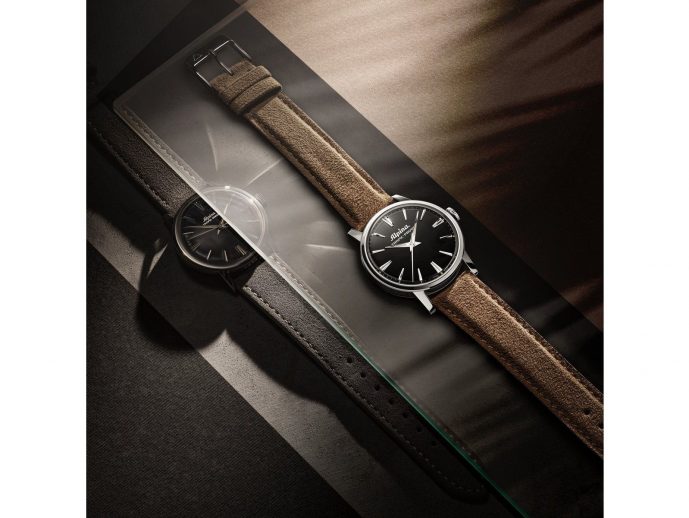Categories more
- Adventures (17)
- Arts / Collectables (15)
- Automotive (37)
- Aviation (11)
- Bath, Body, & Health (77)
- Children (6)
- Cigars / Spirits (32)
- Cuisine (16)
- Design/Architecture (22)
- Electronics (13)
- Entertainment (4)
- Event Planning (5)
- Fashion (46)
- Finance (9)
- Gifts / Misc (6)
- Home Decor (45)
- Jewelry (41)
- Pets (3)
- Philanthropy (1)
- Real Estate (16)
- Services (23)
- Sports / Golf (14)
- Vacation / Travel (60)
- Watches / Pens (15)
- Wines / Vines (24)
- Yachting / Boating (17)
Published
04/02/2025 by Alpina WatchesWith 142 years of history behind it, Alpina has a heritage that’s rich beyond imagination. One example of this is the Tropic-Proof, a quintessential Alpina piece from the mid-1960s that embodies the adventurer’s watch. Featuring an ultra-robust case by master casemakers François Borgel, a Swiss Made movement (that even back then boasted a two-day power reserve) and a design focusing on readability, it paved the way for the Alpina watches of today. Now, the brand has produced the most faithful of tributes: two versions of the piece with, as before, a black or white dial, a 34-millimetre steel case, Dauphine hands and a manual movement, mounted on an Alcantara strap.
In 1965, twenty years after World War II, a new generation was born into a world that was largely at peace and reachable, with new means of transport far better than the steam trains characteristic of the first half of that century.
Transatlantic flight became routine, allowing Europeans to travel westwards; it’s no accident that the first James Bond movie (released in 1962) was set in Jamaica or that two years later, the action in Goldfinger would be in Mexico. At the same time access to the East, Africa, Asia and southern nations – many with tropical climates – also opened up as never before for those in search of new horizons.
Mysterious origins
It was against this backdrop that Alpina came up with the Tropic-Proof design. The precise date is hard to pin down; concepts such as collections, ranges, product lines and inventory were much more loosely-defined in those days. History records an official launch in 1968, but there is evidence of the ‘Tropic-Proof’ name being used right from the early 1960s; careful analysis of serial numbers 760XXX-809XXX suggests that production first started in 1965.
An iconic case
At that time, ‘Tropic-Proof’ referred to a certain type of watch construction and was characterised first and foremost by the use of a case marked with the initials ‘FB’ for François Borgel. In the early twentieth century – the era of the first wristwatches – Borgel was a leading Geneva casemaker. Like many other brands, Alpina commissioned the firm to make their toughest cases and more especially those with screw-down casebacks. The Tropic-Proof designation also called for the use of some of the finest Swiss calibres, such as Alpina’s hand-wound 598R movement. Designed in the 1950s and used uninterruptedly thereafter, by 1965 it had become a watchword for reliability and robustness.
The original Alpina DNA
At that time, rather than opting to specialise in any one field (such as dive watches), Alpina chose to focus on producing sturdy watches at affordable prices, capable of withstanding tropical climates and suitable for adventurers and globe-trotters. Non-magnetic, waterproof, rustproof and impact-resistant, the Tropic-Proof embodied the Alpina ethos encapsulated in the legendary Alpiner 4 – and as such, was the epitome of the brand’s DNA.
A highly faithful reissue
The two new versions being unveiled today are the worthy heirs of this horological adventure. This being the first new edition of the Tropic-Proof since 1965, Alpina has taken great care to remain true to its heritage. In a rare occurrence in watchmaking, the two reissues feature a case inspired by the original: in stainless steel, with a diameter of 34 millimetres.
Similarly, the new non-reflective sapphire crystal (naturally no longer made of resin so as to offer better impact resistance and UV protection) retains the characteristic ‘glassbox’ shape, curving down towards the bezel to ensure the dial can be easily viewed from any angle.
The new Tropic-Proof duo
For these two reissues, Alpina is offering the same colours as on the legacy dials: black and white. While the hand-polished Dauphine hands also remain unchanged from the 1965 edition, luminous coating has of course been applied instead of the original tritium. The hour markers have been faithfully reproduced too, including the unusual use of double markers at 3, 6 and 9 o’clock as well as at noon.
The beating heart of these two unlimited editions is the AL-480 calibre – hand-wound, just as it was in the watch’s first iteration, with a power reserve of 42 hours. In homage to the original’s solid caseback (designed to ensure the 1965 Tropic-Proof remained watertight) the 2025 edition uses exactly the same type, with the discreet addition of the word ‘Heritage’. Both timepieces feature a beige Alcantara pin buckle strap with topstitching.















